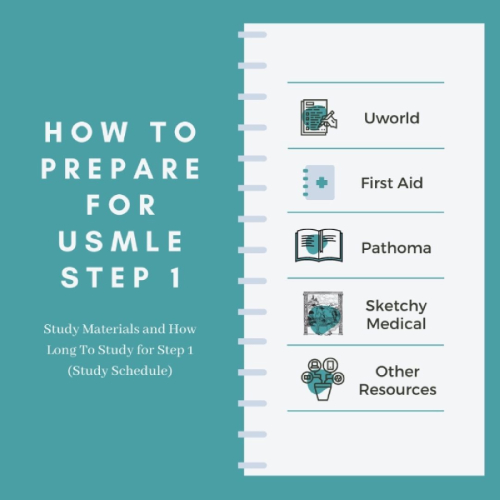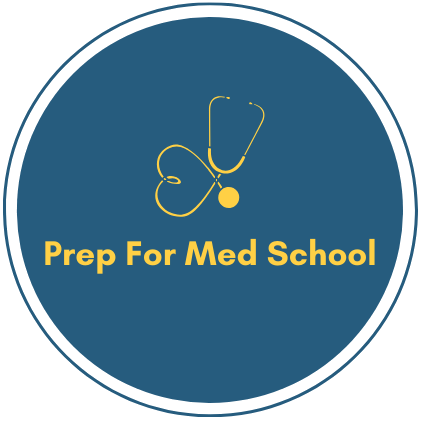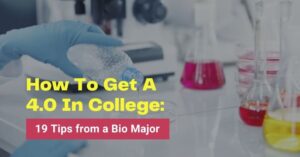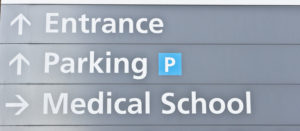Historically, STEP 1 has been regarded as one of the most important factors that program directors consider when examining your residency application. However, this might change as the exam becomes pass/fail. Regardless if scores are reported, STEP 1 is still an important exam to pass.
Table of Contents
You will also find that the effort you put into preparing for this exam will solidify your medical knowledge as you move into your third year of medical school. But how hard is this exam? And what are things to think about as you prepare to take on this beast? We delve into these topics in the article below.
How Hard Is the USMLE Step 1
Unless your school conducts NBME-style exams on a regular basis, you will find STEP 1 to be completely different from the ones you take in medical school. The lecture-based exams in a traditional medical school curriculum are often very focused on the fine details of the material presented in the lecture.
Often, this means that it’s important to memorize every slide, just so you can recall the random fact or specific pathway your lecturer might have mentioned at some point.
These details are considered “low-yield” by medical students. STEP 1, as an exam, is the complete opposite. STEP 1 is a comprehensive exam that covers pathophysiology, pathology, pharmacology, immunology, anatomy, physiology, microbiology, statistics, and epidemiology.
There are still questions that test “low-yield” concepts. But for the most part, the exam is focused on your broader understanding of physiological systems and pathological processes at play in the human body. The knowledge you need for STEP 1 is standardized, so everyone studies the same core concepts. However, the exact questions vary with every test.
STEP 1 is heavily passage-based, and there are very few simple recall questions in my experience. The passages are made up of multiple paragraphs, which can contain confusing or extraneous information. There are around 40 questions per block, with a total of 7 blocks on the entire exam. You get 60 minutes to finish each block, meaning you have 1.5 minutes/question. This is administered over the course of an 8-hour testing session.
Between the dense questions and length of the exam, STEP 1 is physically and mentally exhausting. This means that improving your test-taking strategy is just as important as refining your medical knowledge. It can be very tempting to jump to an answer after finding a buzzword without properly assessing the question. Passages can also contain lab information that is irrelevant to the problem.
This forces you to comprehensively understand the material instead of simply memorizing a giant list of information. In other words, STEP 1 is an exam that forces you to integrate and critically apply your medical knowledge time after time. This is in contrast to regular medical school exams, which in my experience felt like they were testing your ability to regurgitate information.
Simply put, STEP 1 is probably one of the most challenging exams you will take in your academic career. Fortunately, there are a plethora of resources designed to help you overcome this challenging exam.
In addition, with the change to a pass/fail system does make studying for this exam significantly less stressful. Before this change, students would focus on attaining the highest possible STEP 1 score. To be competitive for certain competitive specialties would need to attain an extremely high STEP score.
For example, the average for students who matched into dermatology was a 243 (~70th percentile) and a 249 (83th percentile) for those who matched into plastic surgery. Your future specialty depended on this score. Your STEP 1 score could make or break your residency application.
With the change to pass/fail, students can now focus primarily on passing without worrying about if their actual score will dictate their specialty. According to the National Board of Medical Examiners 2018 data, 96% of U.S. allopathic, 96% of osteopathic, and 80% of non-US students pass STEP 1 on their first attempt. As long as you put in the work, you should be successful in passing the exam.
Study Materials and How Long To Study for Step 1 (Study Schedule)
There are many resources that cover the topics for STEP 1. However, nearly everyone incorporates the “UFAPS” resources as a core. UFAP stands for UWorld, First Aid, Pathoma, and Sketchy.
Uworld
UWorld is an in-depth question bank (Qbank) with almost 3,000+ questions that are very similar to the actual exam. In fact, in recent years, STEP 1 has resembled the UWorld question bank, down to the formatting and user interface, far more than the actual NBME practice exams.
Like UWorld, the real exam often consists of very dense passages. UWorld also comes with two practice exams. It is a great way to prepare for the exam and learn how to integrate all your medical knowledge for the exam.
First Aid
First Aid (FA) is also a must-have for STEP 1. This resource is essentially an outline for the bare minimum content you need to know for STEP 1. It is very helpful to review content and refresh your memory.
Pathoma
Pathoma is an extremely popular medical student resource covering the pathology of disease. The author, Dr. Husain Sattar, provides unique diagrams and explanations that make it easy to digest difficult concepts with crystal-clear explanations. Somehow, he manages to break all these complex ideas into digestible pieces.
SketchyMedical
Sketchy is a very popular resource that provides visual mnemonics to help students learn microbiology, pharmacology, and pathology. In these sketches, the creators will draw out a scene with interesting characters and memorable objects to help you learn medical concepts. These sketches effectively utilize colors, spatial organization, and recurring cues to help you keep track of everything.
SketchyMicro is the most popular one, and most students find it an extremely useful way to learn microbiology. These videos range in length from 2-11 minutes and can be entertaining to watch.
SketchyPharm and SketchyPath are much longer, with some videos stretching over 30 minutes. The videos are also more complicated than SketchyMicro. Due to the length and detailed nature of these videos, some students have unfavorable opinions of them.
However, as someone who is a visual learner, I personally thought it was a great resource. I found it impossible to memorize the drugs and all their characteristics without SketchyPharm. There were many times I was able to answer questions that required me to remember the side effects of a drug just by picturing what a character was doing in a sketch.
SketchyPath was extremely helpful in solidifying pathology concepts covered in other resources. For example, it was the only way I was able to keep track of the different nephrotic syndromes. I found the spatial organization very useful as I was able to recall all the details that relate to a specific disease by remembering where they were spatially organized in a sketch. If you’re a visual learner, it is definitely worth looking into.
Other Resources
There are many ways to supplement the core UFAPS resources. Pixorize is another visual mnemonic resource that I also recommend. These videos are similar to Sketchy, however they are usually shorter and have a heavy focus on biochemistry and genetic disorders. My only regret is that I wish I found this resource sooner instead of coming across it in dedicated (USMLE Step 1 dedicated studying period).
Boards and Beyond is another excellent resource. It is a series of lecture videos that cover a wide range of topics tested on STEP 1. You can think of it as the video form of FA. It also comes with quizzes that help reinforce your understanding of the material after watching a video.
Another popular resource is pre-created ANKI decks. ANKI is a flashcard tool that is very popular among medical students. It is based on the concept of spaced repetition, which is the idea that the brain learns more effectively when learning is spaced out over a greater period of time.
With ANKI, you can create cards and test your knowledge. Your performance will dictate how often you see the cards. For example, cards that you performed poorly on will be shown again the next day, whereas cards that you perform well on will be pushed by days or even weeks at a time. This helps make learning more efficient by allowing you to focus on the things that are difficult to learn.
When it comes to STEP 1, ANKI is a tremendous resource. On top of its based repetition feature, the reason ANKI is so helpful is all the community support thrown behind it. The medical student community has created several STEP 1 oriented decks such as Zanki, Pepper, Lightyear, and AnKing. You can find all these (as well as more information on Anki for medical school) on the medical school anki subreddit.
These decks are built from different resources. For example, Zanki is based on FA 2016, Pathoma, and Constanzo Physiology, whereas Lightyear is based on Boards and Beyond. AnKing is the most comprehensive deck, which is essentially an update to Zanki with more cards from other resources such as UWorld and Robbin’s pathology. There are also SketchyMicro specific decks such as lolnotacop and Pepper.
What this means is you can watch a video lecture and complete the corresponding deck right away to reinforce the material. For example, if you watch a SketchyMicro video, you can head on over to the corresponding lolnotacop deck and finish the subdeck associated with the video content you just watched. This was a very effective way for me to learn the material while I was in school.
What is important to recognize is that everyone has a different preference. Do not use every resource possible or use a resource just because it is something your peers use. It’s okay to be “blasphemous” and even reject resources like Pathoma or First Aid if they do not work for you. Figuring out what resources work is another reason why it’s important to start studying well before dedicated.

How to Prepare for STEP 1 Throughout the School Year
STEP studying is a marathon, not a sprint. It is usually a good idea to start thinking about how you would like to study for this exam about a year before you actually take it. This will give you an idea of what resources and study methods actually work for you
Second-year medical students should be spending some time studying for STEP 1 throughout the academic year, but there are three important things you need to balance.
The first is burnout. Your mental and physical health are extremely important. Be reasonable about balancing medical school and STEP 1 studying throughout the year.
The second is making sure you don’t “waste” UWorld. On the actual exam, you will come across information you have never seen before and need to select the best answer. UWorld will prepare you for this, as it is a great resource that closely models the actual exam and throws bizarre questions that prepare you for the uncertainty of test day. It’s great to use during dedicated as you are closer to the exam, so it can help get you in the right mentality.
But there are nearly 2,900 questions (with more being added every few weeks), which will be impossible to fit in during dedicated. Some people also like to go through it twice. This personal preference will affect when you should start your UWorld studying.
Three, you want to build as strong of a foundation in both knowledge and test-taking ability as possible prior to dedicated. Otherwise, it will be extremely stressful to try to maximize both during dedicated.
I personally think the best way to study is to use board resources throughout the year that align with what you are currently covering in medical school. I would use Pathoma, Sketchy, and Boards and Beyond lectures to understand the material, then do the corresponding flashcards.
Start this as soon as possible, as this will solidify your knowledge foundation and allow you to take advantage of spaced repetition. I don’t think it’s a bad idea to start from Year 1, but that can be overkill for most people. You should definitely start using board resources in Year 2.
Throughout the year, you can supplement with Qbanks like Kaplan, BoardVitals, or USMLErx. This will allow you to start learning how to tackle board style questions without “wasting” UWorld. If you choose to go this route, you should try to finish these Qbanks before you start UWorld. You would also complete your content review prior to dedicated.
Some students do UWorld throughout the second year, but most start in the second half of the second year or at the beginning of dedicated. Given the number of questions, it’s probably a good idea to start at least 3 months before your exam. This will give you enough time to do the entire Qbank, assuming you do 40 question blocks per day.
If you plan to do 80 questions a day (which can be extremely exhausting), it will take you 37 days to do the entire UWorld Qbank. You should still start around 1.5-2 months ahead since you will need additional days for practice exams, breaks, and catching up.
How Long to Study During Dedicated?
My school allowed us 7 weeks of dedicated studying period. I used up the entire time period, but I think it would have been better if I did it within 5.5-6 weeks. Unfortunately, I was also moving at the time and needed more buffer in my schedule.
The problem with studying too long is that you can peak and reach a point where you are so burned out that it reduces your efficiency. You should also take a break before starting your third-year clerkships. I think that, especially with the move to a pass/fail exam, I would not study any longer than 6 weeks.
What To Do On a Day-to-day Basis During Dedicated?
You should spend some time beforehand creating a detailed schedule for dedicated. Make sure you sit down at some point prior to dedicated and figure out how many resources you would like to use. Then take the time to divide up these resources so that you can cover all the topics you feel like are necessary to cover by the end of dedicated.
Be as specific as possible, and make sure it’s a realistic goal, keeping in mind your own study habits. For example, if you know you procrastinate a lot, give yourself more room for error and don’t expect to read a chapter of First Aid in-depth every day. Specify specific pages or lectures that you plan to cover, instead of writing down a general topic. Study your weakest topics first and review your strongest ones later.
If you have trouble setting up your plan, there are resources that can help you do so. Cramfighter and Osmosis will automatically give you a schedule breakdown, based on dedicated goals and what you plan to cover.
You should allot 3 hours per UWorld block (about 1 hour to take it and then 2 hours to review). Plan to finish UWorld no later than a week prior to your exam. This will give you plenty of buffer time.
By the end of year 2, you should have a feel for how long it takes to get through resources like Pathoma or First Aid. You can then specify how much time to go over the content and do the associated questions and flashcards.
For example, you can spend an hour rewatching Pathoma, another hour reviewing First Aid or Boards and Beyond (B & B), and finish up by watching Sketchy. You can then run through Flashcards or secondary Qbanks for another 2 hours.
This part really depends on what resources you find most effective and the topics you plan on covering. For example, some people cut out ANKI entirely during dedicated and focus more on question banks or watching videos to refresh their memory.
This is another reason why it is so important to study before STEP 1 dedicated period. Every second counts during dedicated, and you want to make sure you are as efficient as possible.
Schedule plenty of study breaks, especially at moments when you know your focus will start to wane. For me, I get pretty tired about 3 hours in, so my preference is to take a break then or switch tasks at that point. Schedule time to take care of yourself. This means preparing healthy meals, spending time with family or friends, exercise, and fun activities. I recommend scheduling at least one day of fun every week.
Now let me tell you about my personal experience. I did not start UWorld until May. I did not give myself enough buffer time to do 40 questions a day (especially since I had personal life events like moving that took up time) and was forced to do 80 questions a day in order to complete all of UWorld.
This meant I spent 6 hours a day minimum on UWorld, following by some combination of Pathoma/B&B and Zanki. I tried addressing major weaknesses first, knowing that I didn’t have time to cover everything in depth.
For example, I spent 3 days alone just covering cardiology and 2 days on white blood cell disorders, both of which were weaknesses of mine. I barely touched biochemistry during dedicated since I took it as an undergrad, worked as a biochemistry teaching assistant, and then retook it during medical school. By this point, I felt like I had seen the material plenty of times.
Also, do NOT neglect biostatistics since this can make up a decent portion of the exam that students often neglect.
You should aim to study around 8-10 hours a day. This will give you enough time to cover the necessary material but still do other tasks throughout the day. It will also prepare you to be focused for 8 hours a day, which is how long the actual exam is.
Test-Taking Tips For Step 1
Here a few test-taking strategies that I think are extremely helpful
1) Read the question first. I found this to be a great strategy since the passages can be extremely long and contain extraneous information. By reading the question first, you can filter out all the useless information. Also, be sure to read each question extremely carefully. Dr. Ryan of B & B provides a great example on his website (which also includes even more helpful tips) of a student getting a question wrong because they missed the word “endogenous”.
2) STEP 1 will test you on classic presentations.. From my personal experience and that of my friends, more often than not, the most obvious answer is the correct one.
3) With #2 in mind, also be sure to avoid jumping to conclusions. Remember that STEP 1 test writers focus on writing questions that address your critical thinking and understanding of disease and physiology. This is not a buzzword recognition test.
4) Choose the best answer. Sometimes you will come across two answer choices that could be correct. However, make sure you READ the question and ASK yourself… which answer is the BEST answer to the SPECIFIC QUESTION being asked. Another way to think of it is which answer is partially correct versus completely correct. Answer A could potentially be correct but it might be under a convoluted scenario, whereas Answer B occurs in 99% of scenarios. In this case, Answer B would probably be a “better” answer.
5) You will not know everything for this exam. Recognize that as a fact and accept it. You will get questions wrong no matter how long or hard you study.
6) Do not spend too much time on a question. Every question is weighed equally and you have nothing to lose from guessing. If you spent too much time on one question, it can affect your performance on the block as a whole by taking away time from other questions. This is even more important to keep in mind now that the exam is pass/fail.
7) Practice your time management throughout dedicated. At 60 minutes for a 40 question block, you have 1.5 minutes per question. You should establish your pacing throughout dedicated and be able to finish blocks with some time left over to double-check or address tricky questions.
8) Interpret questions. Ask yourself… “What is the goal of the test writer’s question”. Realize that most of these questions are focused on understanding the mechanisms of medicine.
Final Remarks
I hope you find these STEP 1 tips helpful. It was definitely one of the most stressful times of my life. But just like thousands of other medical students, I was able to get through it successfully. Remember that this is a huge exam, but in reality, it is just one small blip on your journey to becoming a physician.
Resources:
https://blog.amboss.com/us/average-usmle-step-1-match-scores-by-medical-specialty
https://www.usmle.org/performance-data/default.aspx#2018_step-1




